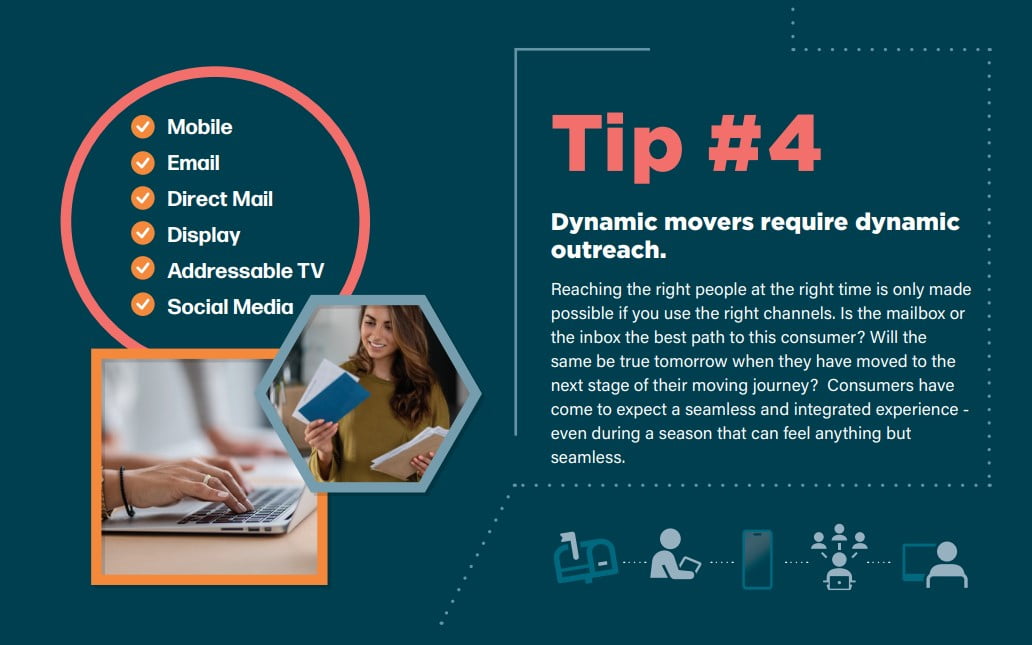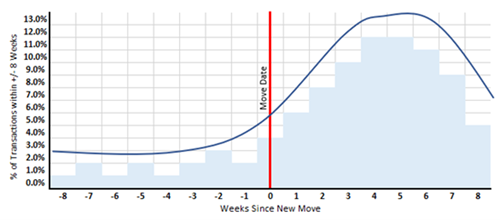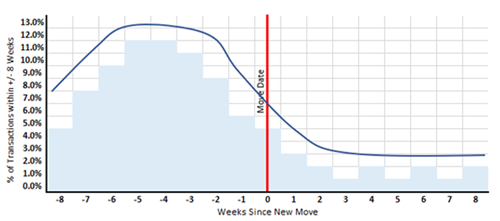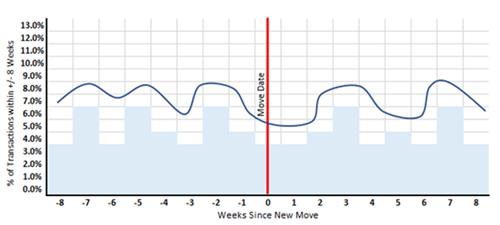You may have heard about the success other brands have had marketing to new movers. In fact, some brands have also found success reaching new movers before they move. Perhaps you have even received those mover emails or direct mail, whether it was advertising new furniture or bundling your auto and renter’s insurance. When people see these offers — and are in the right state of mind — the marketing just clicks. How do you know if mover marketing is the right fit for your brand?
Does your brand offer products or services relevant to new movers?
When consumers move, they often change far more than just an address. When you move, do you really want to take that old sofa with you, or would you rather leave it on the curb and buy a new, more comfortable one?
You should also consider that the new address the consumer will likely be moving to is not perfect…yet. To make that new house or apartment feel like home, design services or even a line of credit may be needed.
Location can also affect your brand. The mover may have seen insurance rates change unfavorably after moving to the new address and decide to search for a new insurance provider. Driving distances also affect shopping behaviors…a move to the suburbs may result in more online shopping.
When reaching new movers, it is important to consider all the factors that could be driving up someone’s need for your brand.

Click here to get started. Download Speedeon’s Mover Marketing Kit
What could motivate new movers to engage with your brand during their move?
Do you have any offers or incentives beyond the business-as-usual offer to engage the new mover? Remember, this doesn’t have to be a coupon or discount.
Offers might include a new mover guide, a free consultation, or white glove services.
A strong, customized offer based on rich data about the mover can really make an impact. For example, a gym franchise may want to advertise “free childcare” to new parents moving into the area, while a younger new mover may want to hear about the gym’s “free 30-day trial” for new neighbors. Think about how you can tailor your offer to truly feel personalized based on additional data points.
Are you focused on new customer acquisition and retention?
Of course, you are! What brand isn’t looking to both keep their current loyal customers and add happy new ones? With statistics suggesting that nearly 20% of US households move annually, reaching new movers is likely going to be a substantial part of your strategy — and customer base.
If life event marketing, however, is still an untapped tactic for your brand, backtesting is the first best step to assess if this could work for your brand.
Backtesting is a way to test if a model or audience’s predicted behavior is in line with actual historical data. Backtesting can also give you a picture of what future marketing campaigns could drive in terms of results.
It is possible to backtest and measure how new movers engage with your brand by comparing when someone experienced a move and when they engaged with your brand. The result is a histogram analysis that highlights these two events for your audience. You’ll be able to see how and when moving impacts brand engagement and if movers are more likely to engage with your brand before, during, or after their move — or if there was no correlation.
Let’s dig into the data around reaching new movers…

The Leading Indicator
This table shows what a leading indicator looks like when plotting transactions or brand engagement relative to the move date. In essence, moving indicates future engagement. This type of indicator suggests that a new move trigger may be used to support a life event marketing program and generate favorable outcomes.

The Lagging Indicator
The table above graphically represents a lagging indicator. We see that transactions or brand engagements typically occur before the new move. These types of indicators help us understand why something may have happened. However, it may only serve to explain reduced brand engagement.

No Indicator / No Correlation
The table above represents what brand engagement or transactions might look like if moving has no relationship or impact.
Missing new mover data for backtesting? No problem. Speedeon frequently performs this type of analysis for clients. The process involves ingesting 12 months of transaction-level detail: leads, quotes, purchases, or other proxies for brand engagement. And then match those records to our New Mover database to identify patterns and trends that organically present themselves for the prior 12 months.
We deliver a histogram analysis similar to what we’ve looked at here. Quickly, you’ll be able to determine if launching a triggered New Movers program makes sense for your brand. Want to request your own free, custom histogram report? Click here to get started.
If you’ve found this article about reaching new movers interesting, you may also enjoy:

